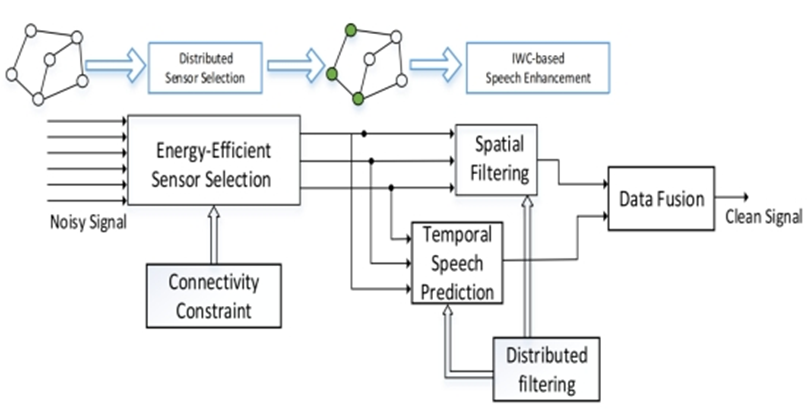Recently, the research team of Hude researchers from the School of Computer Science (School of Software) has made significant progress in the field of wireless acoustic sensor network (WASN). The related paper "Distributed Energy-Saving Speech Enhancement in Wireless Acoustic Sensor Networks" was published in the academic journal "Information Fusion". This journal is the flagship journal in the fields of international computer science and artificial intelligence, as well as a top journal in the JCR Zone 1 of the Chinese Academy of Sciences. Its latest impact factor is 14.7.
Compared with traditional microphone arrays, wireless acoustic sensor networks (WASN) have shown great potential in the field of speech enhancement. However, when using all sound sensors for speech enhancement, it may result in significant energy consumption. In addition, if signal processing is carried out in a centralized manner, a data fusion center with strong processing capabilities is also required.
In response to these issues, the paper proposes a new distributed energy-saving speech enhancement method based on WASN. Unlike existing beamforming methods, this paper utilizes both the temporal and spatial characteristics of speech signals, and uses information weighted filters to suppress environmental noise and interference noise in a distributed manner. Furthermore, this article proposes a new node selection strategy that selects nodes with significant contributions for speech enhancement, thereby achieving a good balance between performance and energy consumption.

Inner Mongolia University is the only unit that completed the paper, and the authors of the paper include: Researcher Hude (first author), Siqintuya (from School of Telecommunications), Prof. Feilong, and Researcher Zhang Huaiwen (corresponding author). This research has received support from the National Natural Science Foundation of China Youth Fund, Regional Fund, Inner Mongolia Autonomous Region's high-level talent introduction research support, and Inner Mongolia University's Junma Plan high-level talent introduction projects.
Paper link: https://www.sciencedirect.com/science/article/pii/S1566253524003713

